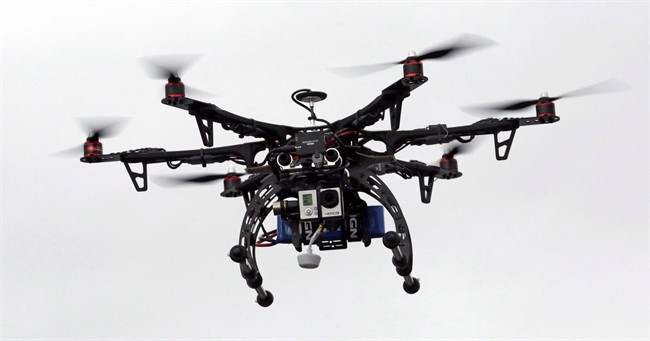Nova Scotia RCMP are investigating an incident involving a drone and an active emergency scene near Avonport, N.S.

According to police, multiple emergency crews, including RCMP, EHS and multiple volunteer fire departments responded to a single vehicle collision on Highway 101.
A small car had left the roadway and as a result of injuries to the driver, emergency personal requested that a LifeFlight helicopter respond to the scene.
The pilot was able to safely land the helicopter on the highway but noticed a drone in the area.
READ MORE: Nova Scotia group urges province to specify ban on drone use by hunters
RCMP say the drone flew too close to the scene multiple times, infringing on the rescue operation. Both RCMP and firefighters searched the area to find the drone’s operator but were unsuccessful.
Eventually, the drone left the area and the EHS LifeFlight was able to take off from the scene.

Get daily National news
“Any potential or real delay in patient transport is of great concern to our teams as every second counts, especially in the case of critically ill or injured patients,” said Jean Spicer, corporate communications manager of EHS.
“Drones can result in significant distraction for emergency crews, and an increased risk for aircraft, crews and patients on scene.”
RCMP are now reminding Nova Scotians that they are assuming considerable responsibility when operating a drone. They’re asking for anyone with information to come forward, either by contacting RCMP at 902-679-5555 or at Crime Stoppers.
The RCMP’s investigation is still ongoing.
READ MORE: Feds unveil new fines, tighter rules for drones flown too close to airports
Transport Canada’s rules for the recreational use of drones say that drones can not fly:
- Below 90 m above the ground
- At least 30 m away from vehicles, vessels, and the public (if your drone weighs more than 250 g up to 1 kg)
- At least 75 m away from vehicles, vessels, and the public (if your drone weighs more than 1 kg up to 35 kg)
- At least 5.5 km away from aerodromes (any airport, seaplane base, or areas where aircraft take-off and land)
- At least 1.8 km away from heliports or aerodromes used by helicopters only
- Outside of controlled or restricted airspace
- At least 9 km away from a natural hazard or disaster area
- Away from areas where operation could interfere with police or first responders
- During the day and not in clouds
- Within your sight at all times
- Within 500 m of yourself or closer
- Only if clearly marked with your name, address, and telephone number
If caught violating the rules individuals could face a fine of up to $3,000, and up to $15,000 for corporations.
- Retired Quebec teacher buys winning lottery ticket at last minute, wins $40M
- N.B. election: Higgs went to ‘very dark place’ with Liberal joke, opponent says
- NDP want competition watchdog to probe potential rent-fixing by landlords
- Jasper mayor says CN Rail relocation will be devastating: ‘Deeply disappointed’








Comments